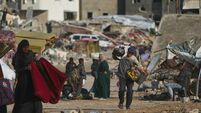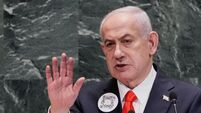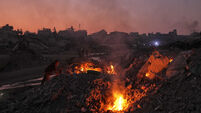Mick Clifford: The ambulance massacre Israel tried — and failed — to hide
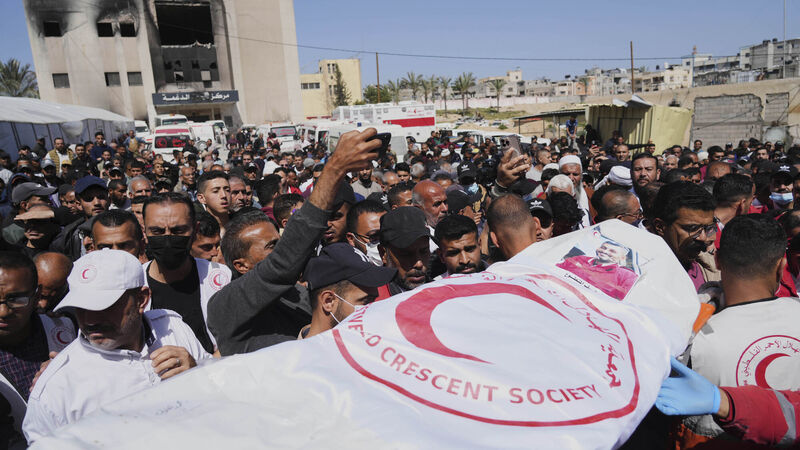
Mourners carry the bodies of Red Crescent emergency responders, recovered in Rafah a week after they were killed in an Israeli attack. Picture: Abdel Kareem Hana/AP
Rifaat Radwan knew he was about to die. He had been shot, mown down in a hail of bullets. As he lay there, he left a message on his phone for his mother. “Forgive me, mama,” he said.
These were among his last recorded words. He wanted forgiveness for the pain his death would cause her mother, who had worried about him every day since he has signed up to serve as a paramedic in their native Gaza.
He was 24 years of age, on a rescue mission to save others, and he was murdered by the Israeli Defense Forces (IDF).
There are some incidents in what is described as the fog of war that shine through, cold and hard, to illustrate the essence of what is afoot.
The murder of 15 emergency workers on March 23 in Gaza shows the depth of depravity being deployed by the IDF.
The incident was one of cold-blooded murder, committed with the specific intention of spreading terror, of cover-up and lies, and when the truth began to out, a tacit acknowledgement that Palestinians are not to be regarded as fellow human beings but instead some sub-species.
We know the details of what occurred simply because Rifaat recorded the last 20 minutes of his life on his phone, in picture and sound.
That day, an ambulance went to Tal as Sultan, an area in southern Gaza to rescue survivors of an Israeli bombing.
Contact was lost with the vehicle and its occupants at around 4am.
Another ambulance went out and radioed back that their missing colleagues appeared to have been shot.
Two more ambulances and a fire truck were then dispatched, all clearly marked with their lights on identifying them as medical aid vehicles.
They didn’t come back.
For eight days, Israel refused entry to the area where the 15 missing workers and their vehicles were believed to be.
Eventually, access was granted. The bodies were buried in shallow graves, the vehicles destroyed. Some of the bodies had hands tied behind their backs.
The IDF soldiers involved were part of a brigade whose commander was reported by the newspaper as telling his troops that “there are no innocents in Gaza,” and was filmed telling them: “Anyone you encounter there is an enemy. You identify anyone, you eliminate him”.
Initially, the Israelis claimed that they had come under fire from the vehicles and that they returned fire on suspected “terrorists”.
The phone recovered from the body of Rifaat Radwan showed this to be a central lie in a major cover-up.
This week, after being forced into a so-called investigation, the IDF announced that there had been “professional failures” that led to the murders, including an “operational misunderstanding”.
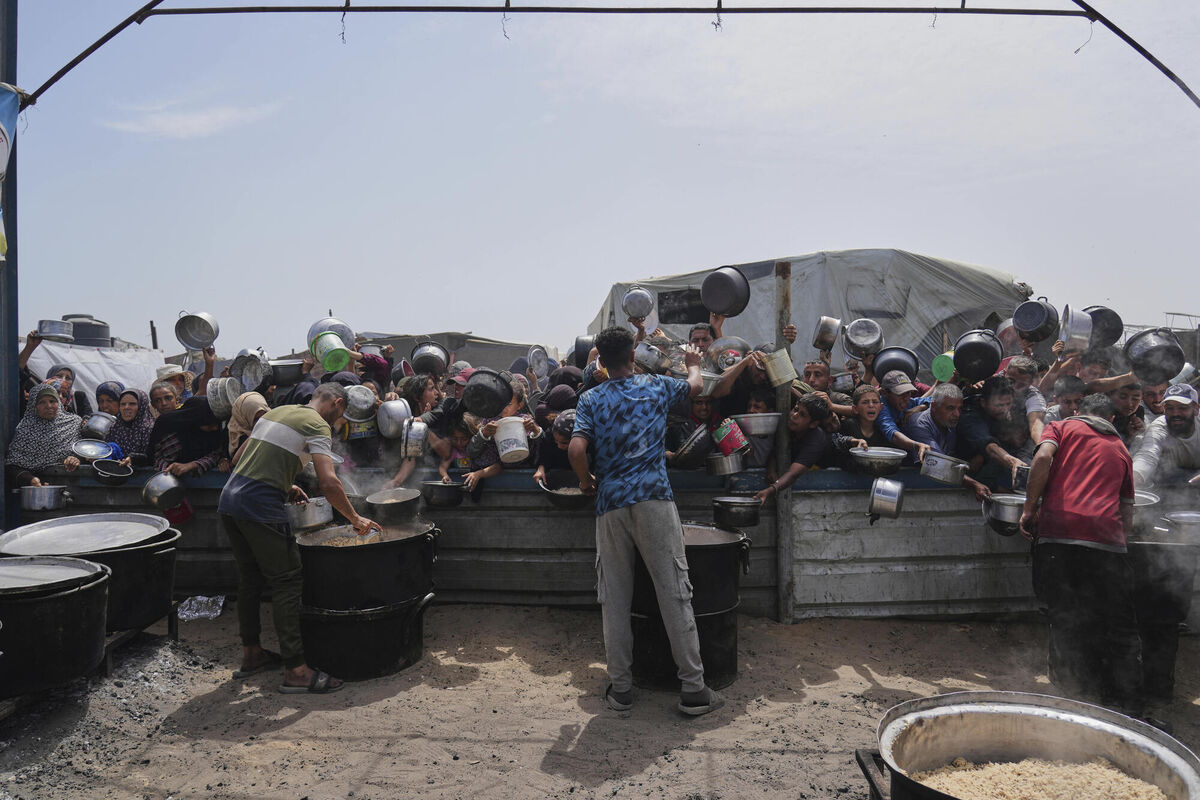
The deputy head of the unit concerned has been dismissed.
Neither murder charges nor war crimes were mentioned in this investigation.
In effect, the outcome sounds like something that would emerge from a gun club where the rules weren’t followed in killing foxes or rabbits.
The term “professional failures” to justify murdering unarmed innocents is an insult.
“Operational misunderstanding” is a million miles from opening fire on emergency vehicles, fully aware that those inside have no connection to any military body.
In the round the Israeli response amounts to, “ah sorry about that, bit of a mix up, these things happen”.
If the incident hadn’t been captured on phone, they would have maintained they were “defending” themselves against so-called “terrorists”.
It is difficult to escape the conclusion that the soldiers saw an opportunity to murder Palestinians and the fact that they were emergency workers provided an extra incentive to spread terror.
Recently, on a visit to Vienna, I was in Sigmund Freud’s former home, now a museum.
A positive feeling permeates the premises, reflecting the huge advances the man known as the father of modern psychology made in treating the human condition.

There is also, however, a dark pall over the place.
Freud was taken to safety in 1938 as the Nazis began persecuting the city’s Jews.
Of a population of 200,000 in the 1930s, only 5,000 were in Vienna at the end of the war.
Freud, largely, due to contacts from his work, was lucky to get out. His sisters, some of whom lived in the family home, not so.
In 1942, they were moved to a designated Jewish ghetto. One of them, Adolfine, died there. Her siblings, Marie, Pauline, and Rosa, were subsequently transported to the Treblinka concentration camp where they were murdered within hours of arrival.
It was 1946 before their family found out what had happened to them.
Today, memories of the Holocaust have complicated the reaction to Gaza in some European countries.
There is guilt that informs a hesitation to outright condemn the government of a country founded by those who survived mass murder.
Antisemitism still exists but in some places today, including the United States, it has been weaponised to excuse the slaughter in Gaza.
Israelis bristle at any comparison between the conduct of their government and the Nazis, but there are indisputable parallels.
European Jews from the 1930s have far more in common with today’s Palestinians than they do those who run Israel.
The term genocide was coined in the early 1940s to describe the Holocaust, but today its most frequent reference is to the systemic murder in Gaza.
Jews were dehumanised by the Nazis, just as Palestinians are today by the IDF.
Ghettos were established by the Nazis in European cities to corral the Jews, while Gaza was designed as a place to herd Palestinians, and in the last two years has been reduced to rubble.
The Israeli government and its army, just like the Nazis, attempt to cover up what exactly they are at.
Nobody is being marched into a gas chamber today, but indiscriminate bombing is pretty efficient as a means of killing.
On Thursday, Isreal’s recalled ambassador to Ireland, Dana Erlich, posted on social media that it was her country’s national Holocaust memorial day: “It seems that even though 80 years have passed since the end of WWII, one of the more heartbreaking lessons we have learned is that the more things change, the more they stay the same.”
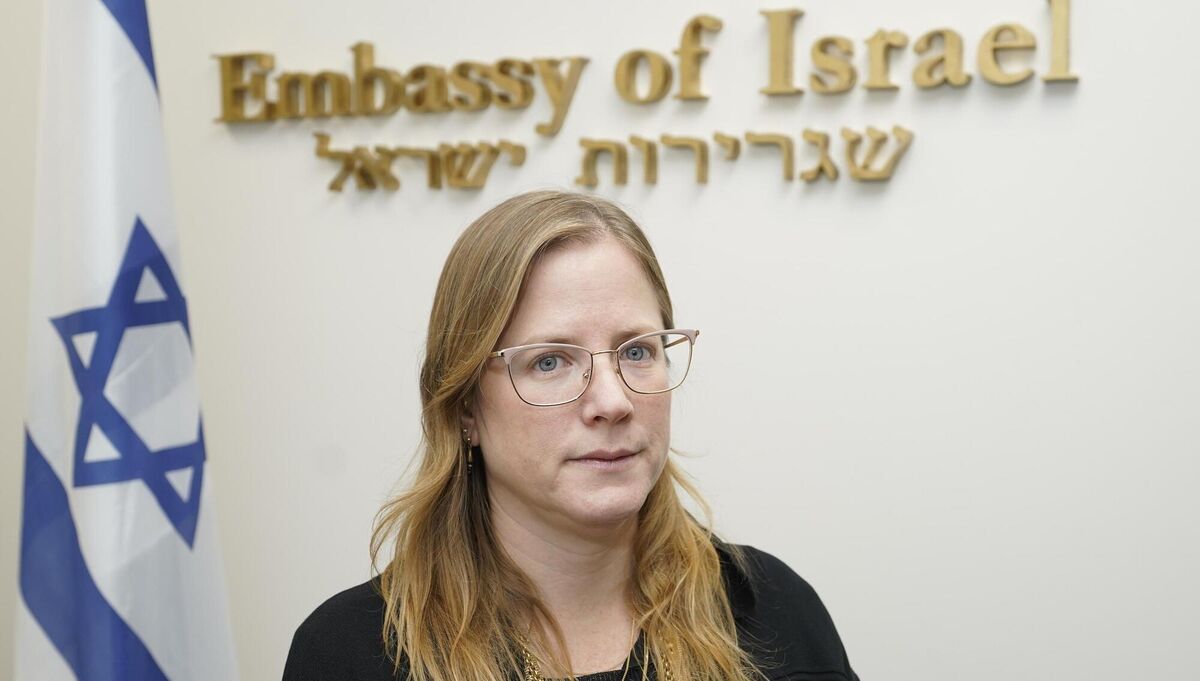
She went on to decry antisemitism, which she claimed is rising across the world “including in Ireland”.
Her post showed an inexplicable lack of self-awareness of what is going on today and a deliberate conflation of antisemitism and horror at the slaughter of innocents by the Israeli military.
She was correct in her observation that the more things change, the more they stay the same.
Today, just as 80 years ago, the capacity for hatred to dehumanise and systemically murder people based on their ethnicity or religion is alive and well.
All that has changed are the oppressors, no longer Nazis, and the oppressed, no longer European Jews, but dispossessed Palestinians.




